How to Rest Steak
Why Resting Steak is a Big Deal
When you’re cooking up a steak, resting it sometimes gets pushed aside because it’s just too tempting to dive right in. I mean who can say no to that perfectly cooked hunk of beef? But taking a breather is super important if you want a juicy and tasty steak. Resting helps it soak back up moisture, which means more flavor in every single bite.
So here’s the scoop on why resting is key:
- Juice Redistribution: Letting it rest helps those juices that got pushed to the center during cooking to spread back towards the edges.
- Better Texture: Resting allows the meat to loosen up a bit, giving you a more tender bite.
- Flavor Boost: A moist inside takes the taste to the next level, letting those natural flavors really shine.
What’s Going On While It Rests
While your steak is chilling, some cool stuff happens. As it cooks, the heat makes the muscle fibers tighten up and push moisture towards the middle. When it cools down, those fibers start relaxing, letting the juices flow back out.
In plain talk:
- Relaxed fibers: This begins as soon as your steak comes off the heat, giving juices a chance to flow back.
- Juice retention: Cut into it too quickly, and you’ll watch those juices run out. Wait, and they’ll stay in there, making for a juicy experience.
Giving your steak time to rest means that each slice you take bursts with yummy goodness.
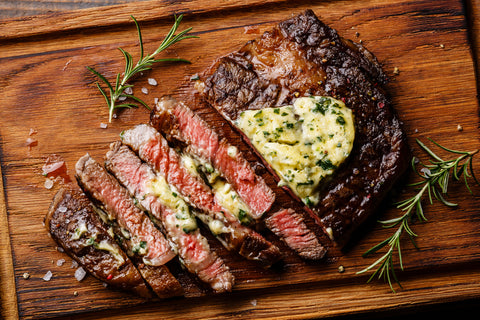
The Science Behind Resting
Protein Magic
To really appreciate resting steak, it’s fun to know what happens on a molecular level. While the meat’s cooking, the proteins in those muscle fibers go through a process called denaturation. Basically, they unwind and reorganize because of the heat. This makes a huge difference in how tender and juicy the steak is.
- Heating Start: When you first toss that steak on heat, the outside begins cooking, hitting temps way over 200°F, which tightens up the proteins and forces moisture towards the center.
- Firmness: This tightening gives the meat its shape, but if you don’t let it rest, cutting it too quickly leads to a flood of juices that could leave you with a dry steak.
Juice Redistribution
Once the steak is done and off the heat, that’s when the resting magic happens. Juices get redistributed, bringing all the flavors back into every mouthful.
- Fiber Relaxation: Muscle fibers start chilling out, letting moisture that got kicked out during cooking come back towards the edges.
- Juice Retention: Giving that steak a little time to rest means when you finally cut it, those tasty juices are still in the meat, not pooled on your plate.
Resting isn’t just a wait; it’s an important part that makes your meal so much better. Patience really pays off!
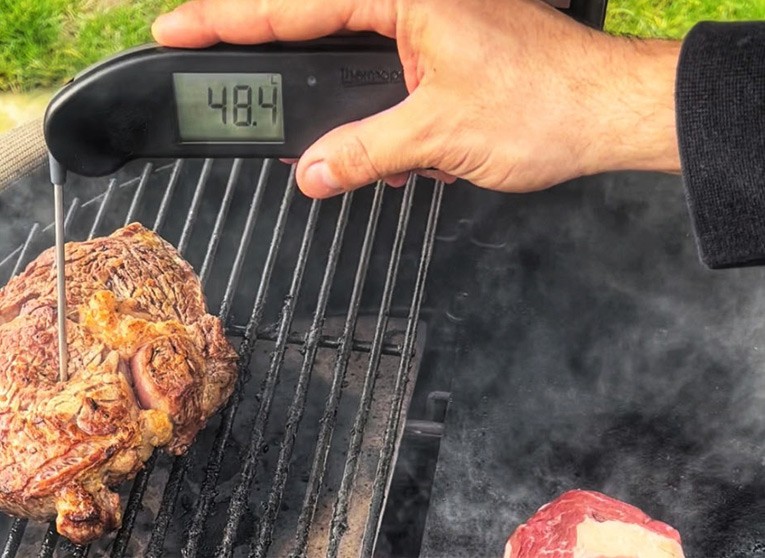
Best Resting Times for Different Cuts
Resting Ribeye
Ribeye steaks are known for their tasty marbling and flavor, so they really deserve to rest to reach their juiciest state. A good rule of thumb is to rest them for 10 to 20 minutes. If you’ve got a ribeye that’s about 1.5 inches thick, resting for around 10 minutes is usually just right.
- Expert Tip: If you’ve got a thicker ribeye, feel free to let it rest a bit longer. The aim is to let those juices spread throughout for that tender experience!
Resting Filet Mignon
Now let’s chat about filet mignon, the star of the steaks! This tender cut also benefits from a good rest. For filet mignon, aim for about 5 to 10 minutes of resting. Since it’s smaller, it won’t need as much time to balance that warmth and moisture.
- Personal Touch: I remember my first filet mignon. I was so eager that I cut it right away! Juices went everywhere, what a mess! I quickly learned it was smarter to hold on for that first heavenly bite.
Resting New York Strip
For New York Strip steaks, about 10 to 15 minutes of resting is ideal. This cut strikes a good balance between thickness and tenderness, kind of like ribeye.
- Keep in Mind: Generally, resting meat, especially steaks, makes them taste better and feel nice in texture. Times might change based on thickness, but these guidelines will help make sure you enjoy a delicious steak!
By keeping these resting times in mind for different cuts, your meals will definitely blow everyone away at the dinner table!
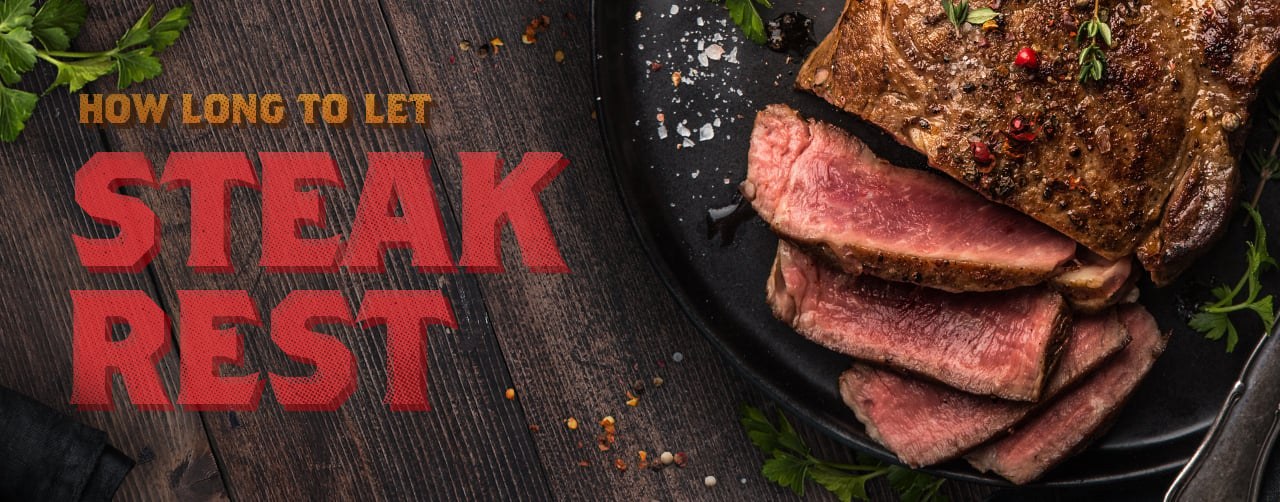
Ways to Rest Steak
Foil Tenting
A classic way to keep your steak warm while it rests is the foil tenting method. It’s simple and really makes a difference.
- How it Works: Once you take the steak off the heat, put it on a cutting board or warm plate. Loosely cover it with aluminum foil to make a tent that keeps heat in without steaming the meat.
- Benefits: This trick keeps the steak warm and slows down cooling. Plus, it helps prevent overcooking from carryover heat, letting the juices flow evenly.
I remember the first time I tried tenting—the juices stayed in so well and the meat was so soft! That foil did a great job keeping my ribeye at the perfect warmth.
Resting on a Cutting Board
Another easy way is just resting it right on a cutting board.
- Surface Matters: A wood or plastic cutting board helps with air circulation, making sure the steak cools evenly.
- No Cover Needed: Unlike the foil tenting, there’s no cover to trap moisture, so the steak’s crust stays nice and crispy.
This method is great for thinner cuts like flank or skirt steak, since they don’t need as much rest time. Watching a steak relax on the cutting board is just perfect; it’s like a calm before the deliciousness!
Both methods are easy and effective, so go with the one that fits your style to get that juicy, tasty result!
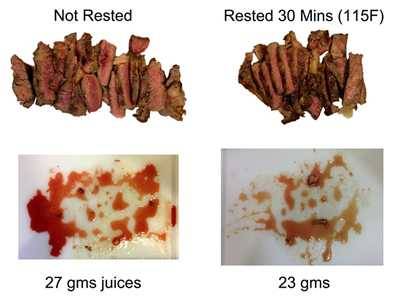
Things to Think About with Resting Time
Thickness of Steak
One big thing that affects resting time is how thick the steak is. Thicker cuts hold more heat and moisture, so they need more time to rest for those juices to spread out properly.
- Rule of Thumb: Rest meat for about 5 minutes per inch of thickness. So if your ribeye is 2 inches thick, you’ll want to rest it for about 10 minutes.
- Personal Lesson: I learned this the hard way! The first time I rushed a thick steak off the grill, I ended up with a waterfall of juices, which was quite a mess!
How You Cooked It
The way you cooked it matters too. Different cooking methods can change how long you need to let your steak rest. Grilling, pan-searing, or roasting can impact how heat spreads and carryover cooking happens.
- High Heat: Cooking at high temps forces out more moisture, so longer resting times help those juices flow back.
- Low and Slow: Cooking at lower temps generally means shorter resting times since it keeps more moisture in.
Room Temperature
Lastly, the room temperature can change your resting time. If you’re cooking outside on a hot day, your steak will cool down quicker compared to cooking indoors.
- Chilly Surroundings: For steaks made in cool conditions, you might want to cover it with foil to keep the warmth in.
- Warm Resting: I tend to place my steaks on a warm surface while they rest to keep them snug and to enjoy the delicious aroma while waiting!
By keeping these factors in mind, you can make sure your steak is perfectly rested and ready, boosting the flavor and giving you a mouthwatering treat!
Common Mistakes with Resting
Cutting Too Soon
One of the most tempting but damaging things you can do is cut into your steak too early. After all that effort cooking, the urge to slice in right away can be super strong. But this impatience usually leads to letdown.
- Why It Happens: When you cut the steak too quickly, those juices that got pushed to the center during cooking are bound to escape, leaving you with a drier steak.
- Personal Story: I vividly remember my first mistake here. I cut into my perfectly medium-rare ribeye, and my heart sank as I watched a flood of juices spill out all over my plate!
To dodge this blunder, give your steak at least 5 to 10 minutes to rest. This way, the juices can spread out and ensure each bite is juicy and full of flavor.
Over-Resting
On the flip side, you can also over-rest your steak. While resting is super important, letting it sit too long can cause it to cool down way too much.
- The Problem: If you wait too long, especially in a cooler area, you might end up with a steak that’s not really appetizing.
- Ideal Rest: For smaller cuts like steaks, aim for around 5 to 20 minutes depending on the cut. Larger roasts can rest longer, but keep an eye on their temperature.
Finding the right balance is what counts. With this knowledge, you can circumvent common mistakes and serve perfectly rested, juicy steaks every time!
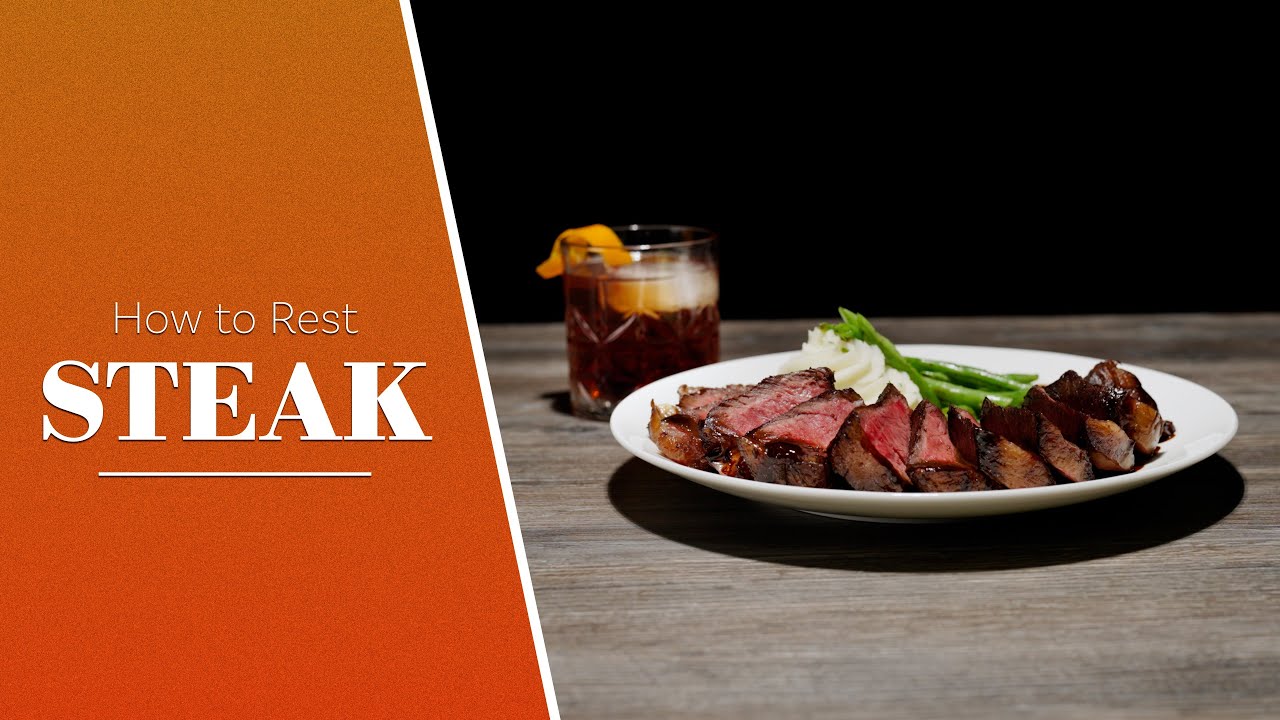
Tips for the Perfect Rested Steak
Keep an Eye on the Resting
Getting the resting process spot on can really change the game with your steak. Here are some handy tips to make sure you’re doing it right:
- Using a Meat Thermometer: Keep track of the internal temperature to avoid overcooking. Ideally, pull the steak from the heat when it’s about 5°F lower than what you want for doneness. I’ve learned that having a thermometer handy has saved me from a few cooking disasters!
- Using a Tent: Cover the steak loosely with foil to keep it warm while letting it breathe. This avoids steam from making that beautiful crust soggy.
Pro Tip: Make sure that steak is resting on a warm plate or cutting board so it holds its temp.
Slicing Your Steak Right
After resting, it’s finally time to slice—just be sure to slice it correctly for the best enjoyment.
- Cut Against the Grain: Always look for the direction of the muscle fibers and slice against them. This keeps it tender.
- Timing is Key: Let your steak rest for at least 5 to 10 minutes before slicing. I get how tempting it is to dig in right away, but that wait really makes each cut juicier.
Follow these simple yet effective tips to elevate your steak prep to restaurant level, making sure every bite is pure perfection. Happy cooking!

Leave a Reply